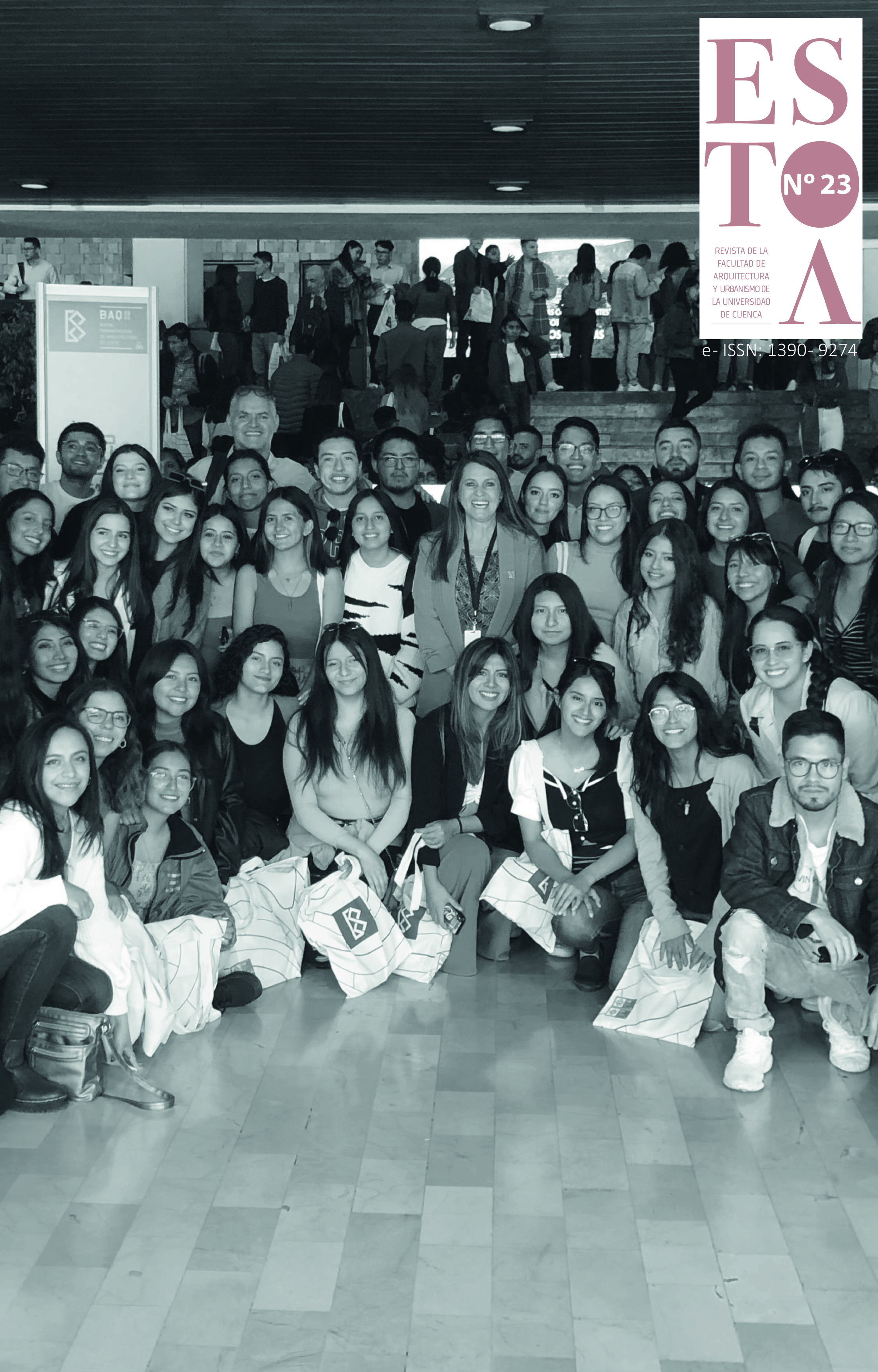The urban industrial growth of Quito: from neoliberalism to 21st century socialism
DOI:
https://doi.org/10.18537/est.v012.n023.a07Keywords:
urban growth, industrial development, neoliberalism, 21st century socialism, public politicsAbstract
The emergence of urban-industrial zones in Quito is the result of complex social, political, economic and territorial processes which, since the 80s, have operated based on currently valid development models. The objective of this study is to analyze the characteristics of growth, expansion and consolidation of the urban-industrial zones in Quito based on those mentioned models in the last 30 years (from neoliberalism to 21st century socialism). A mixed approach was methodologically followed for the analysis of juridical and legislative documents, whose content was qualitatively and quantitatively analyzed by the use of satellite mapping, field study and photography. Finally, the impact of the urban on the industrial and vice versa was characterized. The results of this study show that the incompatibility of land use, between residential and industrial, contradict the logic of rightful access to the city.
Downloads
References
Agència d’Ecologia Urbana de Barcelona. (2012). Sistema de indicadores y condicionantes para ciudades grandes y medianas. AL21.Red de Redes de Desarrollo Local Sostenible.
Borja, J. (2016). La vivienda popular, de la marginación a la ciudadanía, Geograficando, 12(2), 16. http://www.geograficando.fahce.unlp.edu.ar/article/view/Geoe009%0AEsta
Brites, W. (2017). La ciudad en la encrucijada neoliberal. Urbanismo mercado-céntrico y desigualdad socio-espacial en América Latina. Urbe, 9(3), 573–586. https://doi.org/10.1590/2175-3369.009.003.A014
Correa, R. (2009). Ecuador: de Banana Republic a la No República. Nomos Impresores.
Creswel, J. W., y Clark, V. L. P. (2007). Designing and conducting mixed methods research. SAGA Publications.
De Mattos, C. A. (2010). Globalización y metamorfosis metropolitana en América Latina. De la ciudad a lo urbano generalizado. Revista de Geografia Norte Grande, (47), 81–104. https://doi.org/10.4067/s0718-34022010000300005
Diaz, M. (2019). Políticas habitacionales y urbanismo neoliberal: la intervención estatal en la Villa 20, Argentina (1984-2018). Revista de Urbanismo, (40), 1–19. https://doi.org/10.5354/0717-5051.2018.51814
González, D., y Pérez, M. T. (2018). La ciudad simultánea: introducción al sur-globlal. Architecture, City, And Environment, 13(37), 269–280. https://doi.org/http://dx.doi.org/10.5821/ace.13.37.5564
Gramsci, A. (1999). Cuadernos de la cárcel - Tomo 1. Ediciones Era.
Gudynas, E. (2018). Nuevas coyunturas entrre extractivismos y desarrollo. Los límites del concepto populismo y la deriva autoritaria. Ecuador Debate, (105), 23–45. http://gudynas.com/wp-content/uploads/GudynasNuevasCoyunturasExtractivismosEcDebate18.pdf
Harvey, D. (2018). Justicia, naturaleza y la geografía de la diferencia. IAEN-Instituto de Atos Estudios Nacionales del Ecuador.
Instituto Internacional para el Desarrollo Sostenible (IISD). (2016). Manual de Capacitación sobre la Evaluación del Impacto Ambiental. IISD. https://www.iisd.org/learning/eia/es/wp-content/uploads/2016/06/ES-EIA-Manual.pdf
Jirón M, P., Lange V, C., y Bertrand S, M. (2010). Exclusión y desigualdad espacial: Retrato desde la movilidad cotidiana. Revista INVI, 25(68), 15–57. https://doi.org/10.4067/s0718-83582010000100002
Oleas-Montalvo, J. (2020). Ecuador: La economía política del feriado bancario (8-12 de marzo de 1999). Revista Uruguaya de Historia Económica, (17), 49–67. https://www.audhe.org.uy/images/stories/upload/Revista/Revista_17/Oleas.pdf
Red de Redes de Desarrollo Local Sostenible. (2012). Libro verde de medio urbano, Parte I, Parte II y Pate III. Red de Redes de Desarrollo Local Sostenible.
Smith, N. (2009). ¿Ciudades después del neoliberalismo? En VVAA: Después del neoliberalismo: ciudades y caos sistémico, (pp. 9–30). Museu dÁrt Contemporani de Barcelona, Universitat Autónoma de Barcelona.
Urabayen, J., y León, J. (2018). Espacio, poder y gubernamentalidad. Arquitectura y urbanismo en la obra de Foucault. Anales del Instituto de Investigaciones Estéticas, 40(112), 181–212. https://doi.org/10.22201/iie.18703062e.2018.112.2634
Vos, R. (1989). Uso de divisas y dinámica de la industria manufacturera. En La investigación económica en el Ecuador. Instituto Latinoamericano de Investigaciones Sociales, ILDIS.
Published
How to Cite
Issue
Section
License
Copyright (c) 2022 Estoa. Revista de la Facultad de Arquitectura y Urbanismo

This work is licensed under a Creative Commons Attribution-NonCommercial-ShareAlike 4.0 International License.
The Journal declines any responsibility for possible conflicts derived from the authorship of the works that are published in it.
The University of Cuenca in Ecuador conserves the patrimonial rights (copyright) of the published works and will favor the reuse of the same ones, these can be: copy, use, diffuse, transmit and expose publicly.
Unless otherwise indicated, all contents of the electronic edition are distributed under a Creative Commons Attribution-NonCommercial-ShareAlike 4.0 International License.




